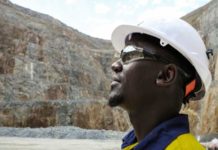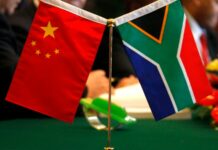
[miningmx.com] — ESKOM is facing decision-making problems similar to those in the period 1998 to 2001 when its failure to start building new power stations caused the 2008 outage crisis.
Announcing that South Africa is once again facing a squeeze on power supply, the utility this time wants the country to know about its problem so that decision-makers realise the gravity of the situation in good time.
Over the past week sources at Eskom’s highest levels have made it clear that the country is facing a second crisis unless important policy decisions are taken now.
Whatever these decisions may be, they are certain to mean further power price hikes.
Eskom has calculated that about R110bn needs to be invested in new coal mines and conveyor belts over the next 10 years.
The mining industry will have to finance these investments, but the problem is how to create a business environment that makes them sufficiently attractive.
Unless policy decisions are speedily taken to address the issue, Eskom is facing coal shortages.
Last week a top official at Eskom said that, from Eskom’s perspective, it seemed inevitable that consumers would pay a higher price for electricity, one that was linked to the price of coal on world markets – unless a new approach was adopted.
According to Eskom’s previous long-term plans, existing coal mines in Mpumalanga would have been adequate to provide for the remaining lifetimes of the existing fleet of power stations.
But the electricity shortage has obliged some of the power stations’ normal 50-year lifespans to be extended to 60 years. That, and delays in building new coal mines, point to a shortfall of 1,500 million tonnes of coal over the next 28 years.
Expected exports of Eskom-grade coal will over this period add a deficit of another 520 million tonnes.
These coal exports are anticipated because new power stations in India – to be commissioned over the next five years – require coal that is “right in the middle” of the quality category Eskom’s power stations use.
Previously only higher-grade coal was exported.
Over the past two years a new coal category, RB3, has been developed that complies with Indian quality requirements – and which is exported through the Richards Bay Coal Terminal.
Pricewise, South Africa is now competing directly with global markets, said a senior official at Eskom’s coal division.
This creates expectations on the part of coal producers that they will in time be able to export coal at prices many times higher than that at which they deliver to Eskom.
Eskom has seen postponement of various projects that should have been started already because the owners of those resources are uncertain about the future market, said the official.
At the McCloskey coal conference in Cape Town on Wednesday morning, Eskom business executive Dan Marokane said that the current pricing model did nothing to encourage mining companies to invest in coal.
He made a plea to those attending the conference for a new pricing model that distributed the risks more evenly between mining companies and Eskom.
He said that the country’s coal resources needed further development.
Exports of coal should also be supported and developed, as long as provision was first made for domestic requirements.
Domestic prices should however ensure more efficient costs and a fair return for the mine operator, rather than be linked to market prices or global prices. Yields should also encourage continued investment in coal mines.
In other words, mining companies should receive a fair return for their capital and skills, he said.
“Mechanisms’ ensuring that the country’s domestic coal requirements were satisfied needed to be created.
These could include quotas or licences for exporters, limits on exporting RB3 coal, and greater powers enabling the minister to intervene in the interest of domestic energy security, said Marokane.
– Sake24











